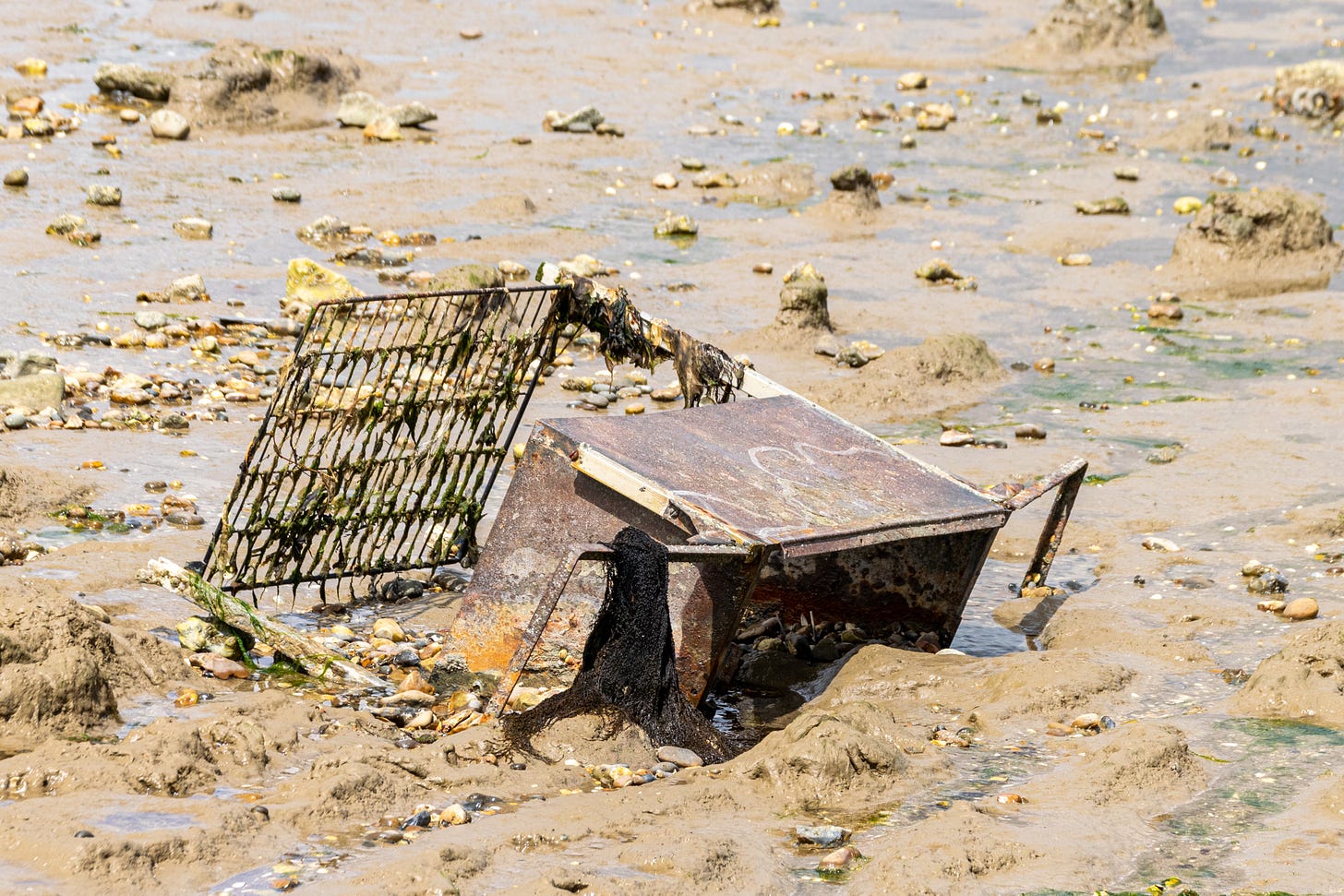Garbage I wrote for the Guardian
Part 3 in this series is from March 2005, on the demise of the hostess trolly: Hostess with the Mostest
My mum had to wait in for the man from the charity shop. He was coming with a van to take away the hostess trolley. An estate car would not be big enough, she said, because it was so huge - part of the reason she was getting rid of it.
I remember her buying the trolley in 1979. It cost £100, two weeks' wages to my dad. The man from Grattan catalogue delivered the prized acquisition in a van similar to the one now coming to collect it. All the other mums on the estate came to look, gasping in awe at the fake teak finish and stack of Pyrex dishes. It was unusual for a working-class woman to own one, and mum was proud. "You can cook Sunday lunch in the morning, put it in the trolley, and it keeps warm until you serve it at 2pm," she enthused, pointing out the hot plates. No one asked why she might want to do this.
I would come down for breakfast at 8am and find myself breathing in the smell of freshly cooked cabbage and roast beef over my morning toast and coffee. The trolley was a distinctive feature of our small council house. There it stood, getting in everybody's way, waiting to be useful. We would sit at the table, being served from dripping-wet Pyrex dishes delivered as if by magic from the depths of this silent helper. The food was never quite hot enough, and had that in-flight look - congealed, watery and colourless. Once, when having guests over for tea, mum served sandwiches from the trolley, but thankfully did not turn on the heat.
Recently, after 24 years of faithful service, mum tried to sell it in Loot for £60, but did not receive a single inquiry. She noticed three others for sale in the same week. The charity shop was her only option, because by then, everyone she knew on the estate had had a trolley but had stopped using it.
The hostess trolley was designed in the 1950s but only caught on in the 70s. It became a status symbol for lower-middle-class housewives who "entertained", and those with big families. Housewives would cook huge meals, slaving away in the kitchen for hours, and then wheel in the trolley when guests arrived, creating the illusion that no effort had been involved. Like the Dyson today, if you had a hostess trolley, those who did not would feel left out and a bit resentful.
I remember one Christmas when I took my partner home for the first time. Harriet had never seen a hostess trolley. It stood by the dining table like an honoured guest. My mum whispered to me in the kitchen after a particularly overcooked serving of turkey and melt-in-the-mouth vegetables, "Harriet must have been impressed by the trolley. She admitted her mother doesn't have one." For my mum and other working-class women, owning a hostess trolley was a climb up the ladder towards Abigail's Party style lower-middle-class affluence. I, on the other hand, have memories of gravy you could slice and cauliflower that had disintegrated into a semolina-type mush.
Although the trolley seems to be on its way out, a straw poll soon revealed that several of my middle-class friends' mothers use them. Indeed, one confessed that her mum recently bought a new one. They are still available, but increasingly in black and chrome, rather than peel-off mahogany finish. In John Lewis they sell for £1,600. For those seeking retro cool, Italian faux 1950s designs can be bought online for the guts of £2,000.
They are popular, I am told, among orthodox Jews, who are forbidden to do any kind of labour, including cooking, on the sabbath. Melissa Bloom, a mother of five living in north-west London, syas her trolley is invaluable: "We used to eat deli food and sandwiches from Friday teatime to Saturday sundown. When the weather is cold, it's the last thing you want. Now we have several hot dishes pre-prepared and kept warm in the hostess. My husband is happy."
Similarly, some devout Muslims use the trolley during Ramadan when they fast from sun-up to sundown for a month, with food being prepared in the evening and consumed the next evening.
The impromptu dinner party and the microwave may have done it for the hostess trolley, but for many it will be remembered with affection. My brother used to call ours "Doris", and warn me that she had been dragged out from under the stairs when I rang from the station to say I was on my way home. Now Doris is gone, and I wish I had appreciated her more when she was there.







Me too was once an owner of what I ultimately acknowledged as a ' poison' gatherer! A steady warm temp guaranteed to fertilise the trickiest of bugs.
Still, what fashion!
I remember the envy felt by those who couldn’t reach such giddy heights of consumerism. With hindsight, I’m glad we never had one as my stepmother’s cooking was so awful, no amount of hostess trolly action would have rendered it any more edible - probably reduced it to warm mush. Envy at that time was also felt for Alpine pop deliveries and anything produced by Ronco. My parents did have a Goblin teasmade so it wasn’t all bad (I think that was paid for by Greenshield stamps).